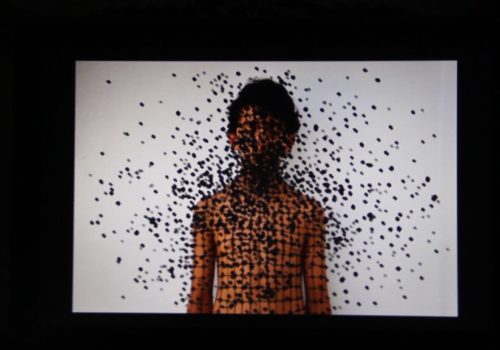One mustn’t confuse the Cairo Biennale, normally organized by the Egyptian Ministry of Culture, with the Something Else project, Off Biennale Cairo. Overseen by the curator Simon Njami and themed around the idea of “Something Else,” this event was held between November 28 and December 28, 2015.
The founder of the project is none other but the prominent Egyptian artist Moataz Nasreldin, self-proclaimed cultural activist who launched the art space Darb 1718 in Cairo. His premise can be summed up as follows: although Egypt is making considerable efforts to increase access to culture, cultural activities remain unaffordable and isolated. This is paradoxical, considering the country’s rich millennial cultural history. In recent years, Egyptian artists and art production have been marked by the revolution, which has largely limited artistic expression to images related to the current events. A project such as Off Biennale Cairo aims at expanding the art scene in Egypt and changing the stereotypes by creating a dynamic and innovative space that subverts the expectations about art.
The first edition of the biennale, under the leadership of chief curator Simon Njami, tapped into the talents of eight curators: Olfa Feki, Aura Sikkula, Power Ekroth, Valentina Gioia Levy, Pilar Tompkins Rivas, Elena Giulia Abbiatici, Jean F, and Orlando Britto Jinorio. Each curator received carte blanche to choose artists and works, with the only requirement to propose “something else.” The exhibition featured 118 artists.
Olfa Feki is a Tunis-based architect and independent curator. For this project, she wanted to show something other than what is usually associated with Tunisian artists whose practice is essentially built around painting and installation.
The Tunisian pavilion was installed in an old Cairo apartment where each artist had his or her own room where to construct their own universe.
Featured artists included some of Olfa Feki’s past collaborators, such as Héla Ammar or Sophia Baraket, and first-timers like Noutayle Belkadhi. Héla Ammar’s exhibit is comprised of three series produced over seven years, untitled Identities. They raise the question of feminine identity and the woman’s position with respect to herself and society.
Vapors by Sophia Barekt is an excerpt from a collective project on hammams in the Tunis Medina. Olfa Feki, who curated the project, finds it remarkable, “first of all, for the total ease of the male customers before the lens of a camera operated by a woman, as well as the singular way in which the images approach a subject that had been treated before but which is revisited here with great authenticity.”
The presence of Sabri Ben Mlouka, who exhibited nudes at the very center of Cairo, outside galleries, was a challenge to the organizers, but the black and white images won over the public.
Featured artworks included Mouna Jmal Siala’s photography- and drawing-based video installation, The Son, and Rochdi Belgasmi’s Zoufri, a contemporary dance performance. The curator chose to show the latter project’s research video which allows the audience to retrace the different stages of the artist’s creation.
Lastly, a series of sculptures by Noutayel Belkadhi, entitled Parallel World, offered a vision very unlike the rest of the exhibition: steel sculptures, mobile and stationary, as well steel installations highlighted by a simple light source.
INFORMATIONS
www.somethingelse-off.com
















